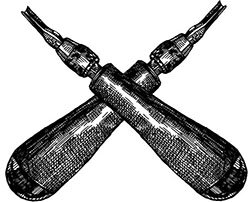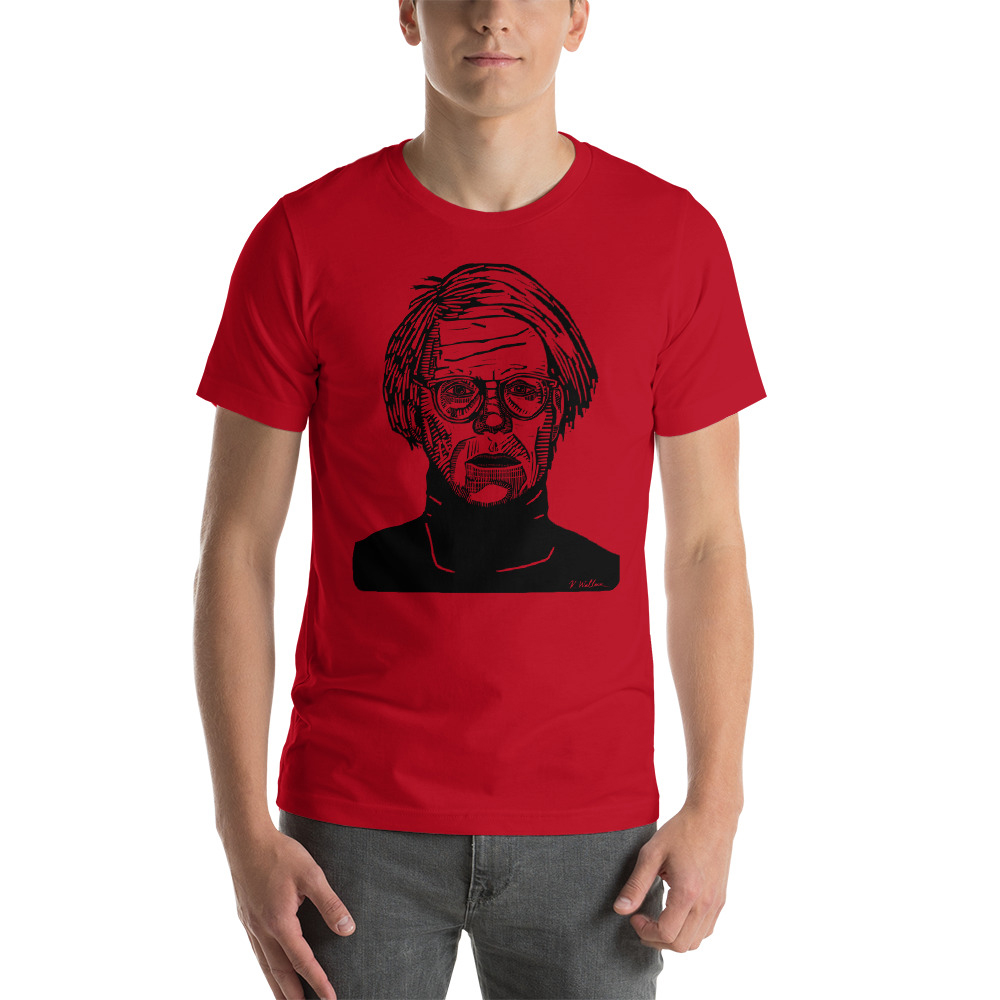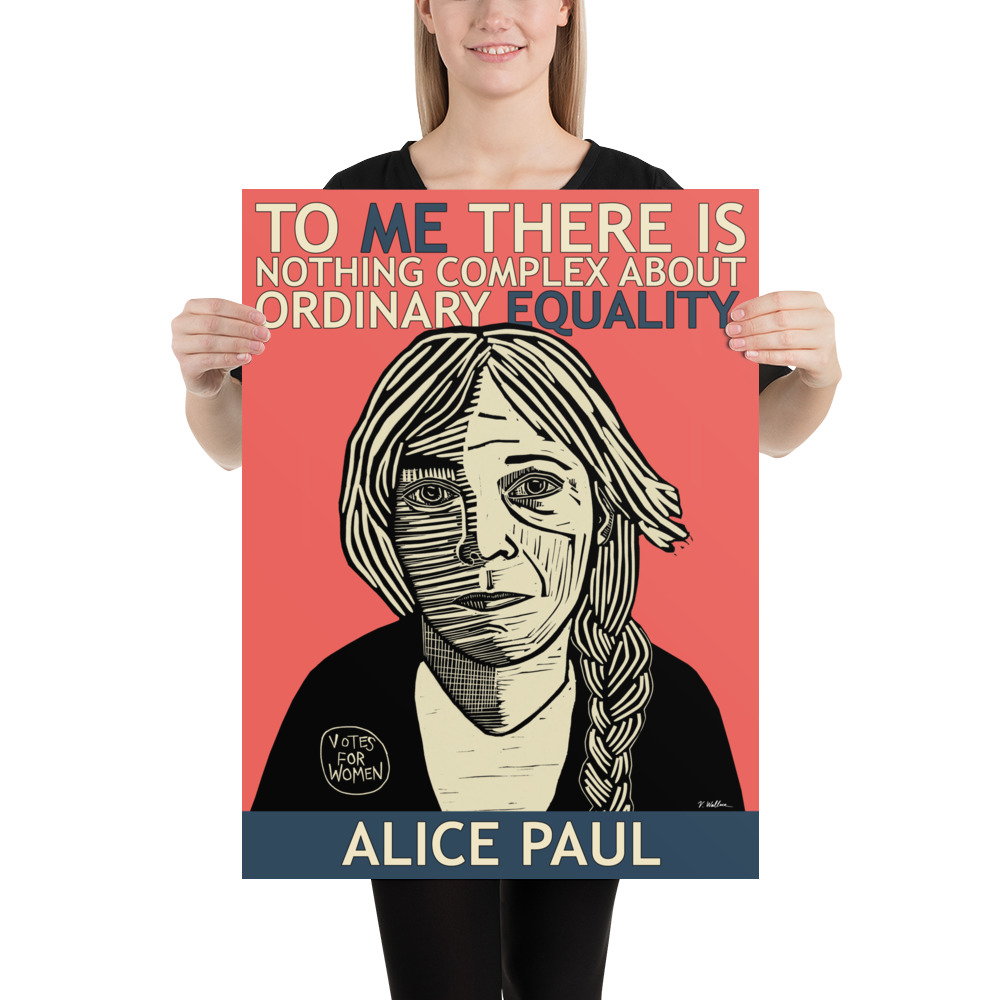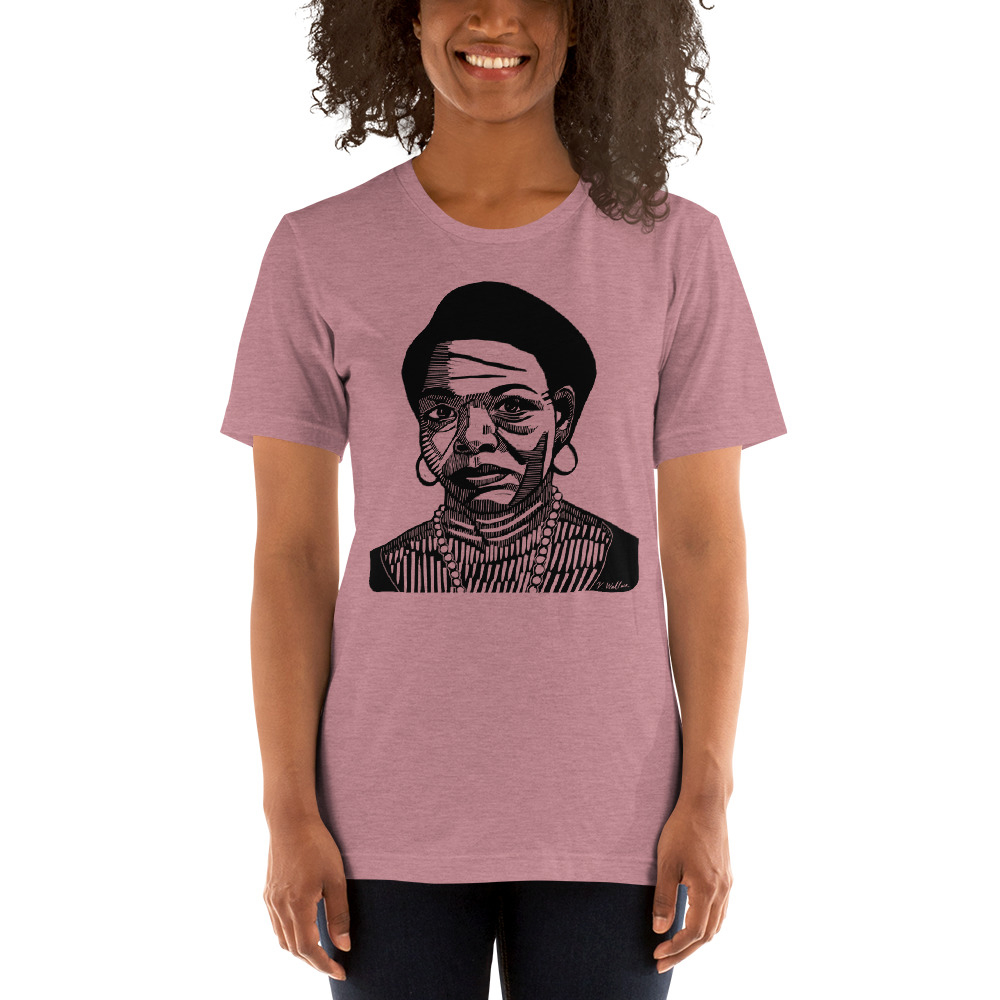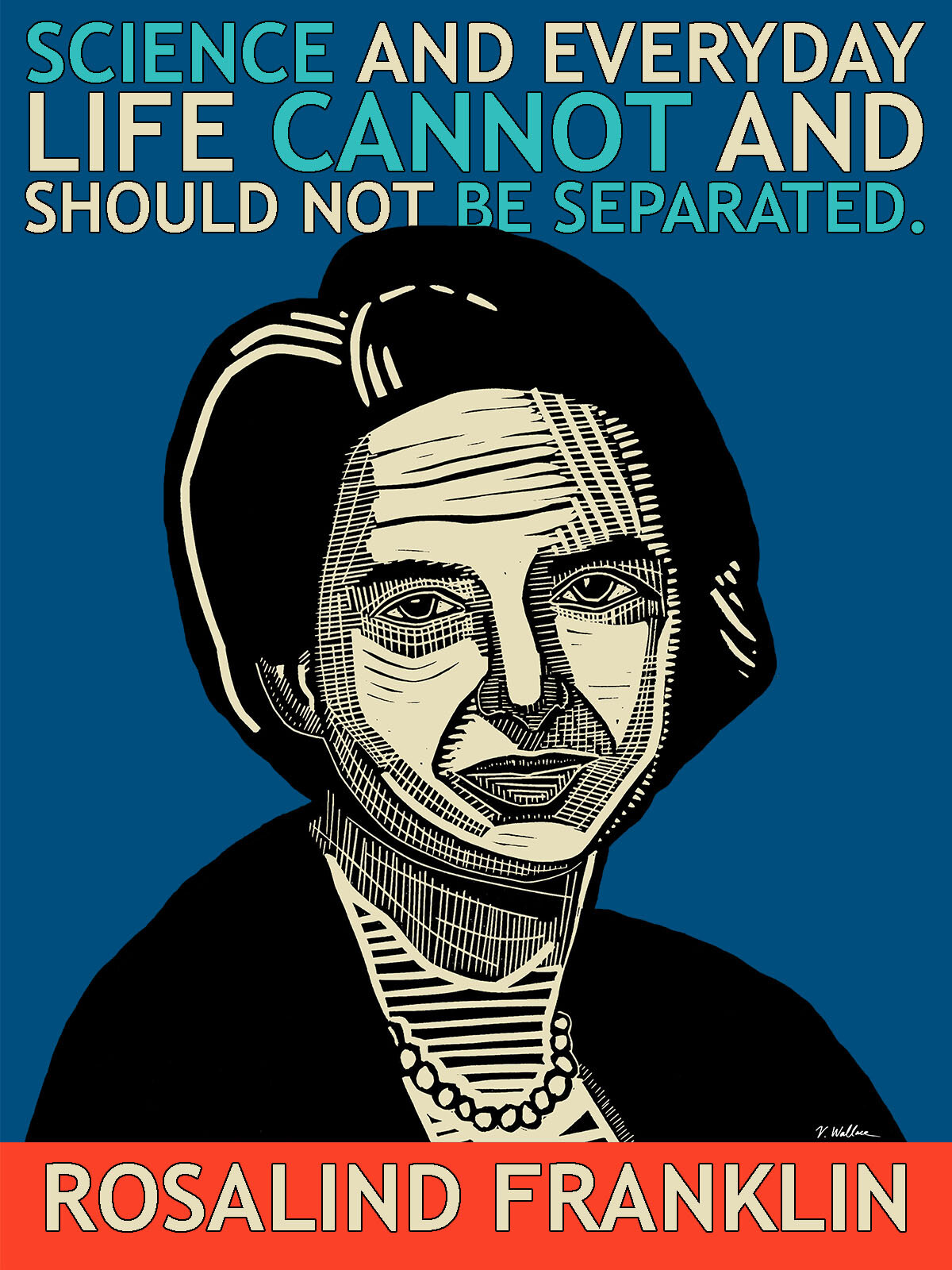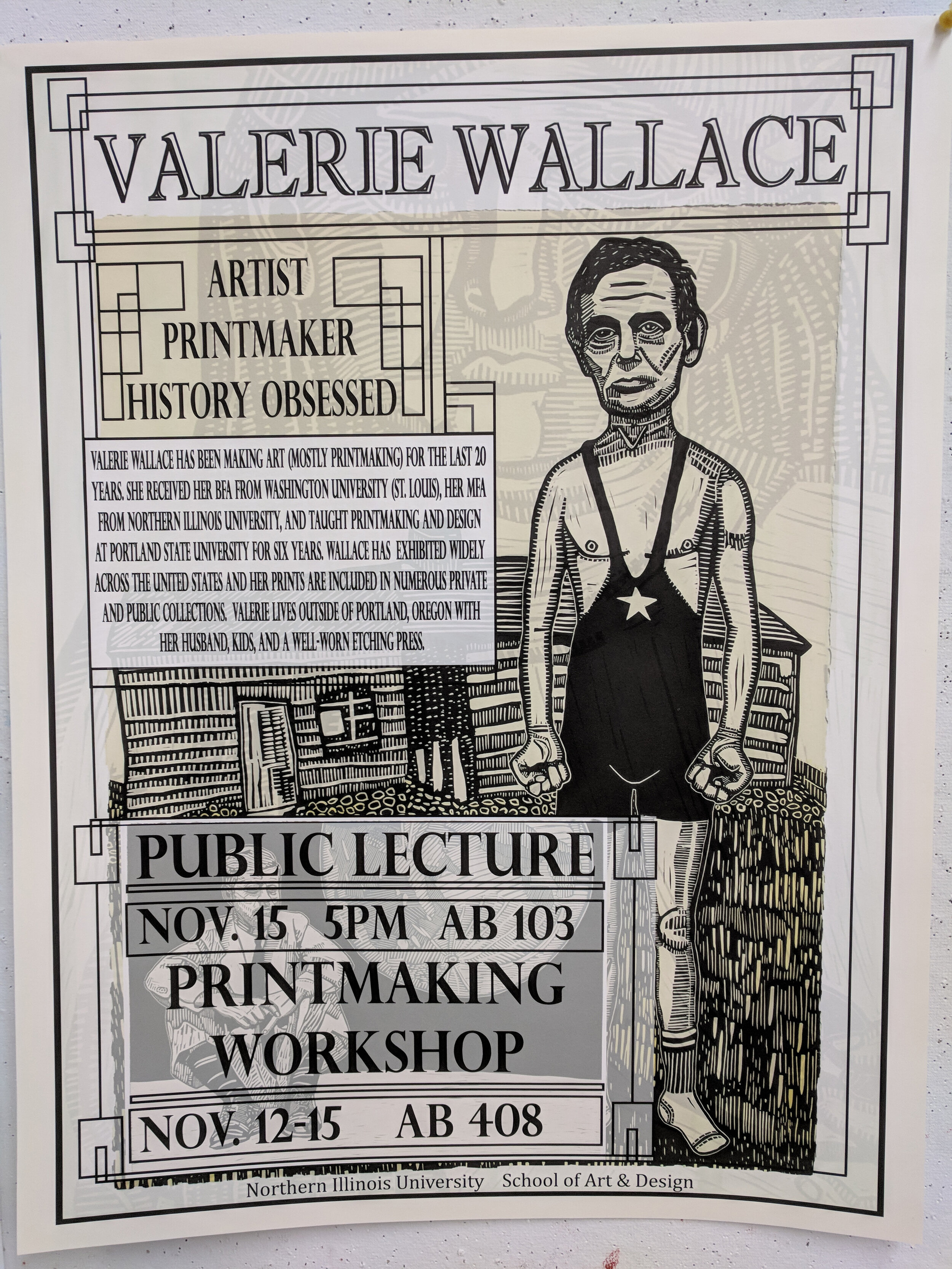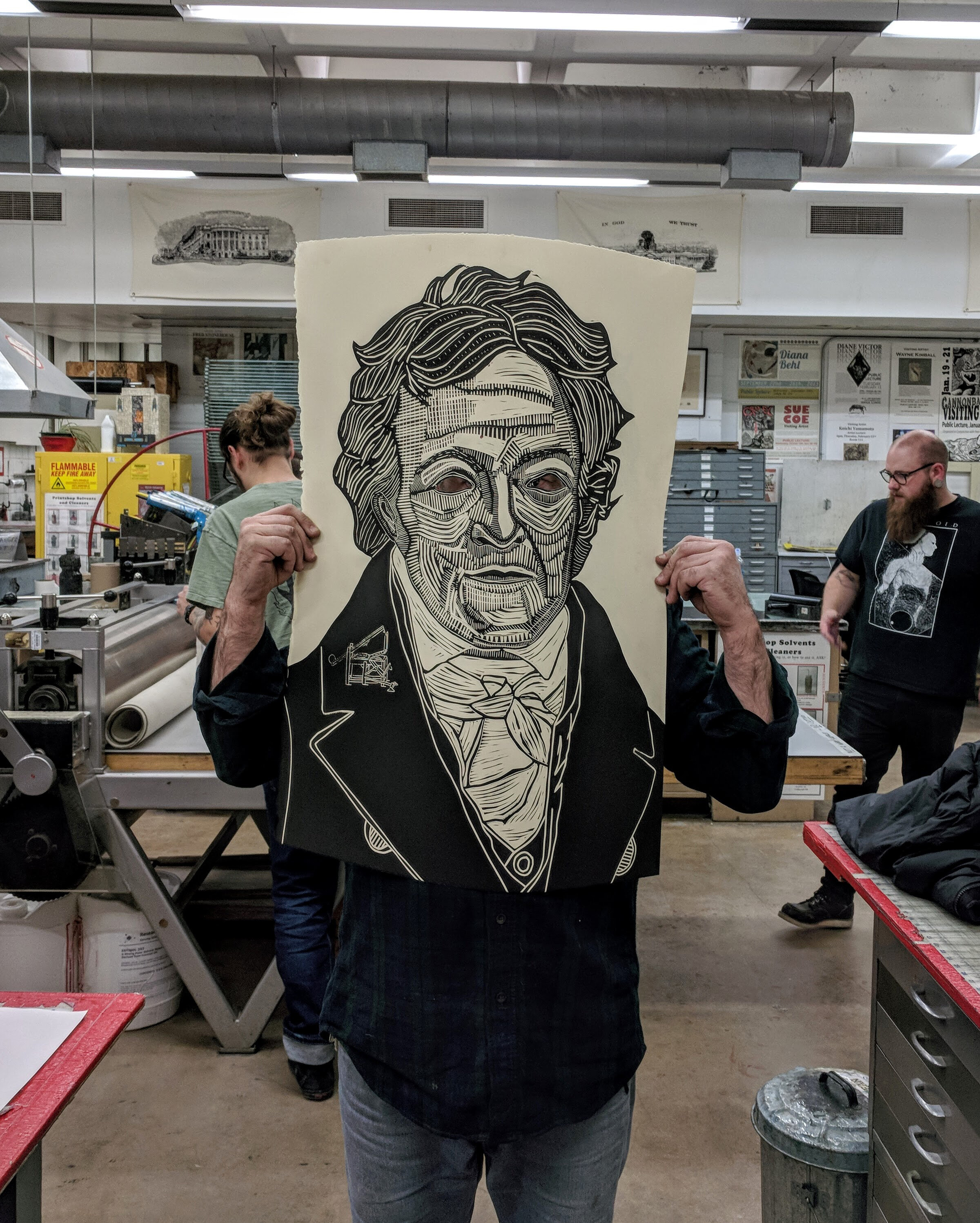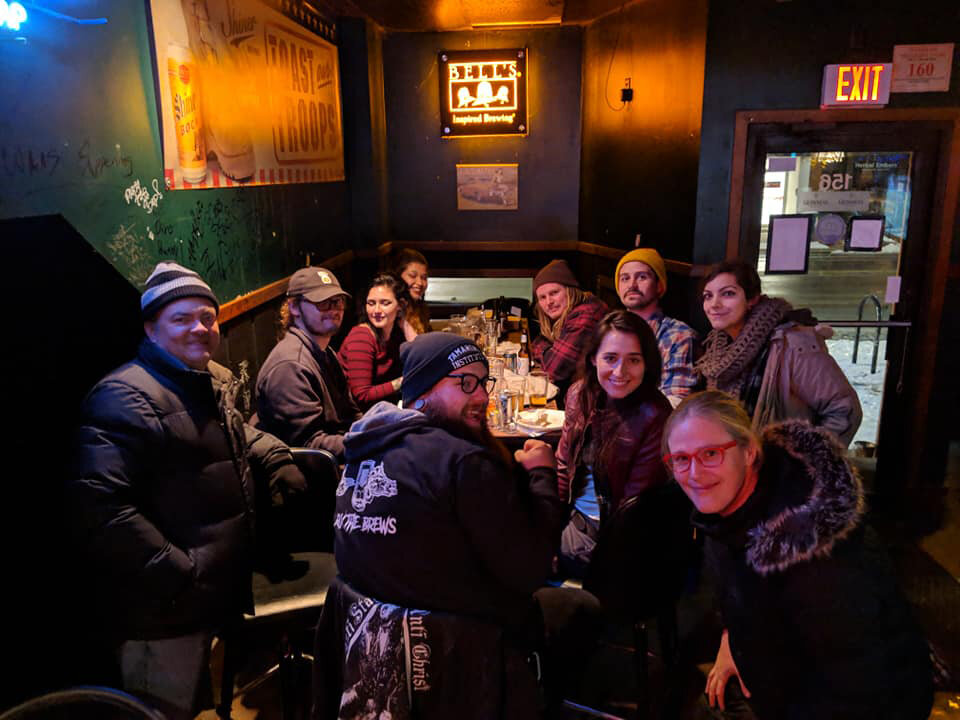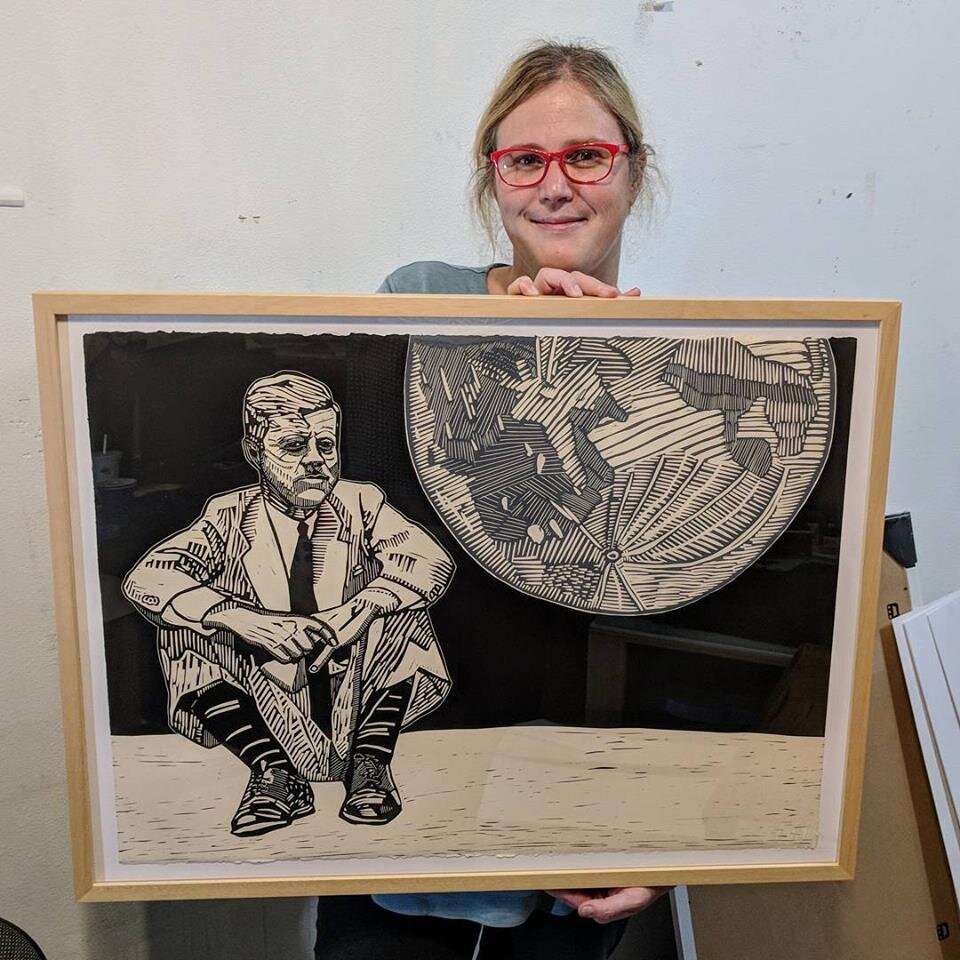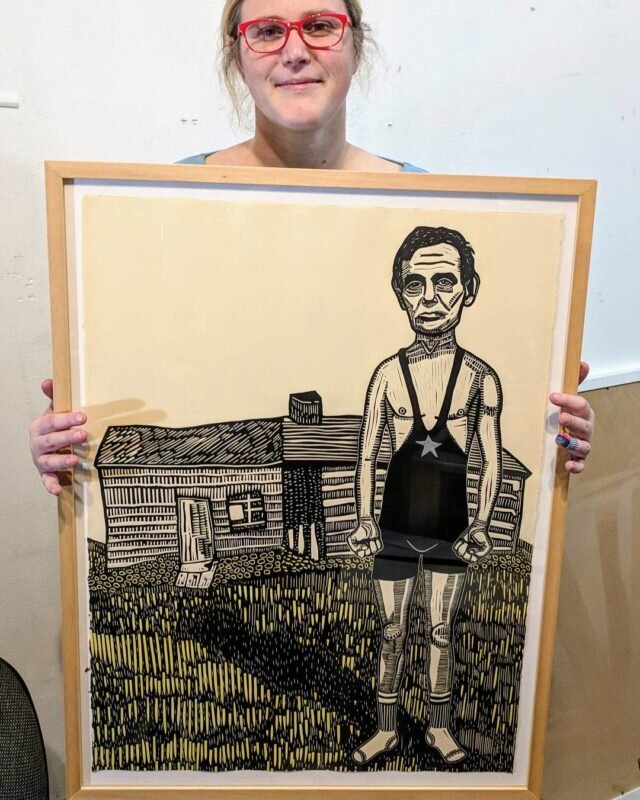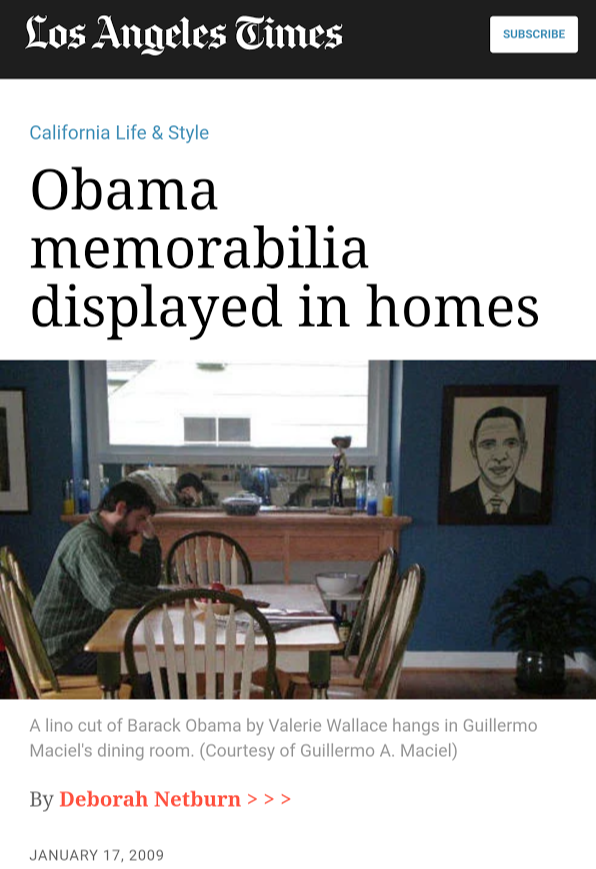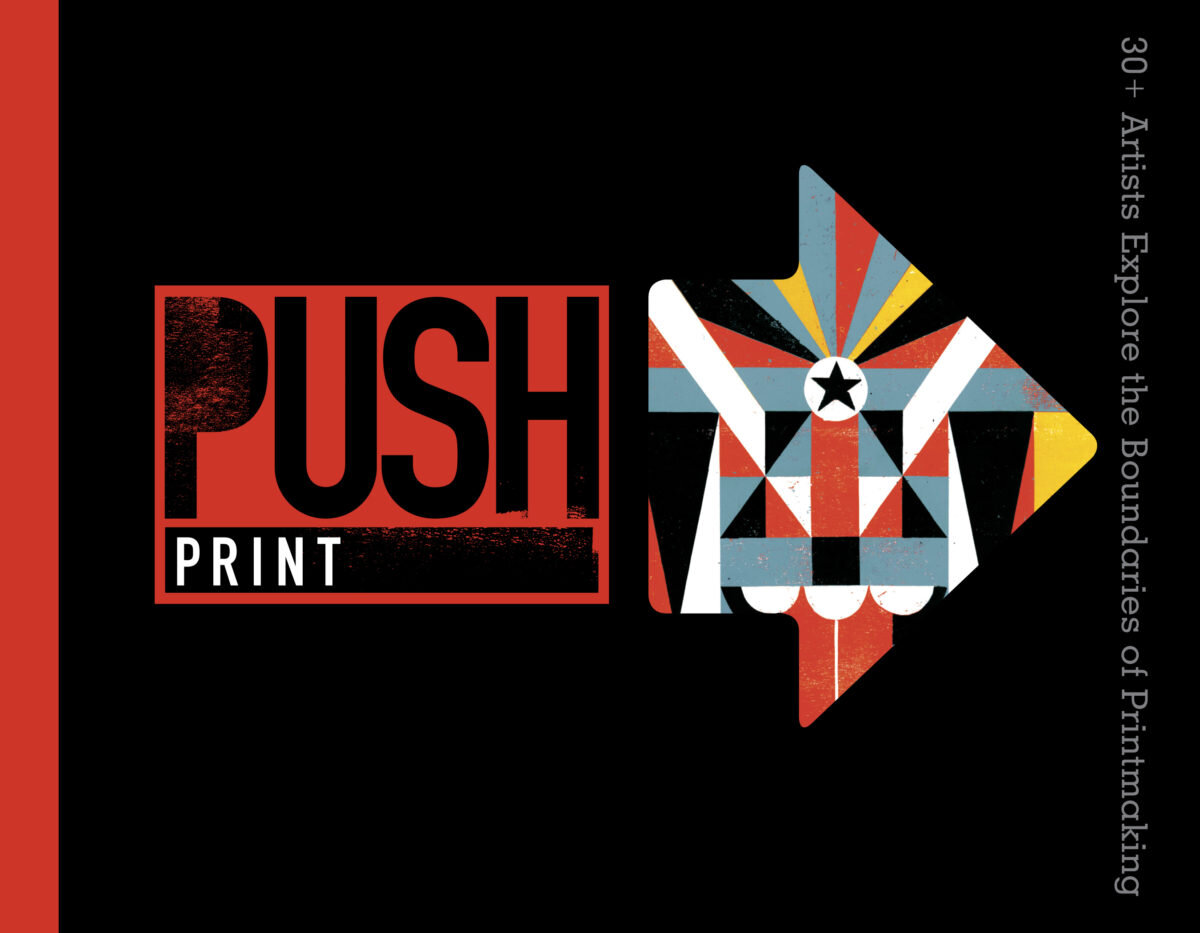Both of my grandfather’s were born when their father’s were 70 years old.
My father’s side (the Wallace’s) have been involved in American politics and the military since before the Revolutionary War, and were active in the fight for abolition and woman’s suffrage. My great grandfather, John Milton Wallace (1844-1928) was General Lew Wallace’s first cousin, and was raised by Lew’s father and step mother, Governor David Wallace and Zerelda Wallace. John Milton Wallace was a drummer boy and surgeon’s assistant in the Union army for the duration of the Civil War, and was in both Sherman’s March to the Sea and The Grand Review of the Armies in Washington, DC. Hearing stories about the Civil War growing up has had a deep and lasting impact on my art. My great grandmother, Martha Blanche Early Wallace, who died in 1986, was the oldest living Civil War widow to receive a pension.
On my mother’s side, after many years of searching, I found that my great, great, great grandfather (William Hunt Cambridge, born 1713, Maryland) was the son of a white indentured servant (mom) and an enslaved African (dad). I was only able to find this out because there was a miscegeny trial with court records. William Hunt Cambridge’s birth was a crime, and he was sentenced to 31 years of slavery to his mother’s “master” at birth. His mother was sentenced to an additional 7 years of indentured servitude, and I have no idea what happened to his father. I hope that through the use of DNA and YDNA, I will someday know more about him and his other descendants. (contact me: vwallaceart@gmail.com)
My great grandfather, Perry Commodore Perry Cambridge (1838 – 1908), moved to Indiana from Maryland via Kentucky, when he was a child. His grandfather was one of the first settlers of what would become Indiana (around 1799), and owned a tavern and general store on a major trade route. He donated money to start a school in his town for his children to go to, but the other people in the town wouldn’t let his kids attend because they were not white. So racism followed him and his family everywhere they went for 300 years. It didn’t matter that he was a pioneer or free or a human being or that he had money. It is not clear whether Perry or his parents were born into slavery (though many of his extended family were), he was listed in the census as a free person of color through 1890. His first and only marriage was to my great grandmother (who was white) at the age of 60 in 1897. My mother knew nothing about her grandfather Perry, or his family growing up. It’s unclear how much my grandfather Paul (he died in 1969) actually knew, he was only two when his father died.
Slavery in America robbed me of my family history like it has done to every person descended from enslaved people. My mom’s last name, my son’s middle name, CAMBRIDGE, was taken from Cambridge, Maryland, a hub for the slave trade on the east coast. Harriet Tubman was born in Cambridge, Maryland. I like to think that my first free ancestor took the last name Cambridge, because he imagined a life where a fancy last name made all the difference. But that was not to be. Only skin color mattered.
And 300 years later, I am still unsure of so many things. Except for the fact that history is truth, and sharing it, however painful, is the only way to move forward and understand.
There is still so much more for me to uncover about my family history, and it seems that as soon as I think I have it figured out, I find some new story and my whole perspective changes. My family history makes me very aware of the privilege that America can bestow on some and take away from others. My ancestors were a product of both, and while mine has been a mostly privileged journey, my awareness of the disparity among the people in my lineage deepens my empathy and helps me have an innate understanding of the ongoing challenges faced by the marginalized and less fortunate.
I am a combination of many different stories. The things I have discovered about my genealogy make me want to delve even deeper into who and why I am, and what it means to be an American, a mother, and an artist. Creating art that contemplates many narratives; I’m able to see the pain, good fortune, tough luck and ingenuity that create the sum of many parts that culminates in me and provides the stuff of what my children will grow into.
My grandfather, Paul Cambridge, and his mother, Lavonna Storm. We don’t have any photographs of Perry Commodore Cambridge, Paul’s father. He died before this picture was taken. Photo taken around 1910.
Edwin R. Cambridge (1842-1926), son of John Hunt Cambridge and wife Matilda Malson. He was Perry’s cousin. The image on the right is his Civil War photo.
One of my first memories was taking this picture. Here I am with my father, my Aunt Kay, and my great grandmother, Martha Wallace. I remember how much age and history were in Martha’s hands. It shocked me. A visual representation of a long life lived. I knew even at the time, it was a beginning seeing an end. Picture taken in 1983.
